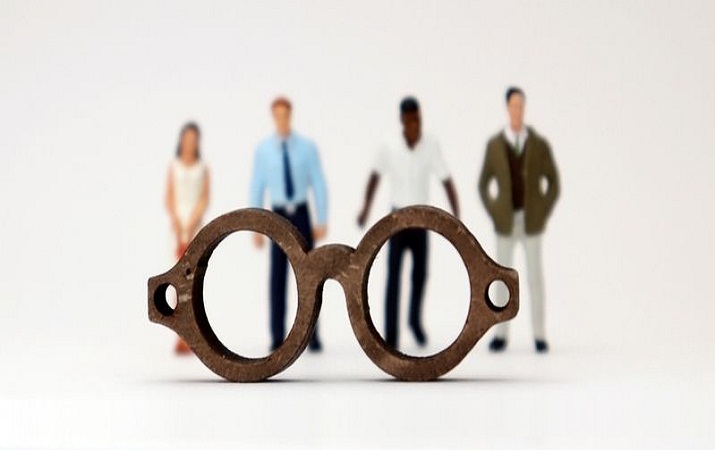Indian Call Centre Executives use English sounding names in their communications.
Organizations refuse to recruit recently married women for fear of going on maternity leaves.
Up until a decade ago, nobody had heard of separate washroom facilities for the physically challenged.
While such actions were justified from a business-friendly perspective, all are a case of what we know as biases. Unconscious or Implicit bias is a result of professionals allowing their own beliefs, stereotypes, understandings to cloud their judgements while taking decisions.
In most cases, such biases are a harmless projection of one’s profound nature. However, organizations and employees should be wary not to be blinded by these biases.
Unconscious biases can encompass a range of characteristics including social group, interests, appearance, age etc.
Managers of today need to stave off biases by identifying them within themselves as well as their teammates and making a conscious effort to minimize their applications in daily conduct.
Below we shall discuss the different kinds of biases along with tips to overcome unconscious bias in the workplace:
1. Beauty Bias
The underlying bias here is that beautiful people will also be intelligent and perfect fit for any job. If it were true, then there would not exist a single flop actor, right?
It is common among team members / recruiters to fill a position with someone who shares same attributes as the person being replaced.
While beauty bias could be a common pre-condition for customer-facing roles, but for long-term strategies, the organizations would not succeed.
2. Conformity Bias
Conformity Bias happens when one’s decisions are based on the collective decisions of the rest of the team. Be it under peer-pressure or ineffective skills, management looks down upon conformity bias.
Professionals exhibiting this kind of bias could very well be push-overs’ and hence cannot be trusted with Leadership roles.
In order to stick with the formal way of decision-making, teams should ensure individual process adherence for every decision.
3. Confirmation Bias
Suppose the next interviewee was born in same village as the interviewer.
There is a good chance that the interviewer could form an initial opinion based upon this inconsequential piece of information.
Thus, the interview could lead further into insignificant discussions, which could result in a flawed decision of recruiting the wrong candidate.
Read also: A brief view of Industrial Engineering
4. Halo Effect
Up until 2015, the unicorns of Indian start-up industry had a policy of recruiting only fresh graduates from IIT/NIT/IIMs’. It took slowdown in sales for the industry to realize that they need to diversify their teams with professionals from different backgrounds.
Halo Effect is when we are awed by one attribute in the resume of the colleague. It is important to look at the bigger picture.
Consequently, the starry-eyed treatment may make these individuals miscalculate their place in the organization.
In such cases, one could strike out the blinding attribute and consider the rest of the profile before making a decision.
5. Horns Effect
This is the exact opposite of the Halo Effect. While the latter spoke about hero-worship, Halo Effect uses a disliked attribute as a catalyst to complete block the person.
For example, a US professor’s low opinion of Indian food kicked off a war on twitter. Whenever one has a negative opinion about a colleague / recruit, one should take time to find the reasons for it.
To know if they are trivial, cross-verifying one’s opinions with other teammates is also a good idea. Finally, as discussed in previous point, muting the said attribute and evaluating the profile can lead to a more balanced decision.
6. Attribution Bias
Attribution Bias happens when prior observations and judgements lead us to perceive a specific line of thought.
It points towards individuals overlooking the set-up’ and its impact on the behavior of another person.
One of my earliest supervisors; having switched jobs, was looking to recruit from among his ex-colleagues. Surprisingly, none of his ex-colleagues expected him to interview’ them for the job roles. This is a prime example of Attribution Bias, wherein the ex-colleagues were expecting’ a direct entry into the new team.
Unnecessary to say, all were rejected. As professionals, we should always be aware of the set-up under which one interacts with each other.
As an Admissions Manager, I come across many resumes of candidates with gaps’ during or post studies. It is necessary to get more information about these gaps rather than reject the candidates upfront.
When in doubt, enquire! Continue enquiring until one is satisfied with the responses. Biases can be resolved only through self-learning and discipline.
Courtesy: India Today
Download uLektz Apps for Latest Educational News / Events / Scholarships
Follow us: #facebook #twitter #linkedin also enroll our skill course








